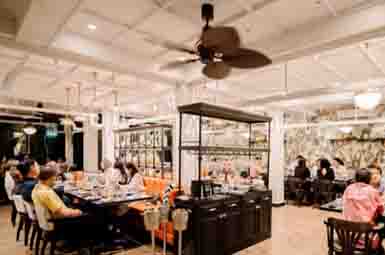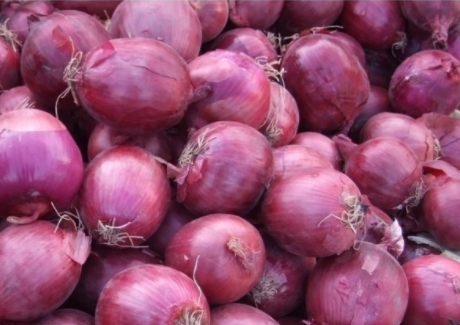食品伙伴网讯据欧盟食品安全局(EFSA)消息,7月18日欧盟食品安全局新发布了食品和饲料中二恶英和多氯联苯含量水平的报告。
本次样本由成员国于1995-2010年之间采集。本次共测定了13797份样本中的二恶英以及类二恶英多氯联苯(DL-PCBs),以及19181份样本中的非二恶英类多氯联苯(NDL-PCBs)。
部分原文报道如下:
Dioxins and polychlorinated biphenyls (PCBs) are toxic chemicals that persist in the environment and accumulate in the food chain. They can cause adverse effects on the nervous, immune and endocrine systems, impair reproductive function and may cause cancer. Because of potential high dietary exposure in some population groups, dioxins and PCBs represent an important public health issue at the European level.
A community strategy for dioxins and PCBs was adopted by the Commission on 24 October 2001, addressing measures to limit or to eliminate their emission into the environment through source-directed measures and addressing the way to actively decrease the presence of dioxins and PCBs in food and feed.
Results from national monitoring programs on the presence of dioxins and PCBs in food and feed were reported to the Commission on a regular basis. In 2010, EFSA received the mandate from the European Commission to collect and analyse, on a continuous basis, all available data on dioxins and PCBs in food and feed. The mandate includes the publication of a report every two years analysing these data.
A total of 13,797 samples for dioxins and dioxin-like PCBs (DL-PCBs) and 19,181 samples for non dioxin-like PCBs (NDL-PCBs), collected between 1995 and 2010 from 24 European Union Member States, Iceland and Norway, were considered for a detailed assessment.
At least one quantified congener of dioxins and DL-PCBs was found in almost all feed and food samples analysed, whereas at least one of the six NDL-PCB indicators was quantified in respectively 68.4 % and 82.6 % of the feed and food samples. Feed and food from animal origin contained higher levels of dioxins and PCBs than foods of plant origin. “Meat from eels” and “Fish liver and derived products” contained the highest average contamination levels for both dioxins and PCBs.
The non-orthoPCBs was the main contributor to the total toxicity equivalents (TEQWHO05) of dioxins and DL-PCBs, representing between 21.0 and 74.5 % of the total TEQWHO05level, followed by the polychlorinated dibenzo-p-dioxins (PCDDs) and the polychlorinated dibenzofurans (PCDFs), which together represented between 12.4 and 73.2 % of the total TEQ level. Concerning the NDL-PCBs, the PCB-153, followed by PCB-138 and PCB-180 represented altogether between 36.9 and 97.8 % of the sum of the six NDL-PCB indicators depending on the food and feed group.
The level of dioxins and DL-PCBs exceeded the permitted maximum level (ML) in 9.7 % of the food samples and 2.3 % of the feed samples. The level of the six NDL-PCB indicators exceeded the ML in 3.0 % of the food samples and 2.4 % of the feed samples.
A decrease in the contamination levels of dioxins and PCBs was observed over the years in the three food groups taken into consideration for the time trend analysis: “Raw milk and dairy products”, “Hen eggs and egg products” and “Muscle meat from fishes other than eels”.
The six NDL-PCB indicators were found to represent around 50 % of the sum of the NDL-PCBs which were measured in the food samples. Levels of the six NDL-PCB indicators and DL-PCBs were positively correlated in all food and feed groups. The correlation level was depending on the food groups and sometimes influenced by outliers.
Subgroup analysis revealed that meat from sheep contained on average less dioxins and PCBs than meat from bovine animals. Eggs coming from battery rearing contained significantly less dioxins and PCBs than those coming from free range, organic and outdoor growing production. Farmed salmon and trout contained on average less dioxins and PCBs than wild-caught salmon and trout. Herring, salmon and trout coming from the Baltic region were more contaminated by dioxins and PCBs than those coming from other regions. Milk at farms had higher levels of dioxins and DL-PCBs than milk from bulk, whereas the inverse was observed for the NDL-PCB indicators.
Chronic dietary exposure was assessed for 68 population groups across the different European dietary surveys collated in the EFSA Comprehensive European Food Consumption Database, representing 7 age classes (infant, toddler, other children, adolescent, adult, elderly and very elderly) in up to 17 Member States.
Depending on the population group (i.e. combination of the age class and survey), the average exposure to the sum of dioxins and DL-PCBs was estimated to be between 0.57 and 2.54 pg TEQWHO05/kg b.w. per day and the 95thpercentile was between 1.2 and 9.9 pg TEQWHO05/kg b.w. per day. The percentage of inpiduals exposed above the Tolerable Weekly Intake (TWI) of 14 pg TEQ/kg b.w. was estimated to be between 1.0 and 52.9 %. The major contributor to total exposure was the food category of milk and dairy products for almost all groups of infants and toddlers, whereas it was fish and seafood for most of the groups of adolescent, adult, elderly and very elderly. Meat and meat products also contributed significantly to total exposure. A general decrease in exposure to the sum of dioxins and DL-PCBs of between 16.6 % and 79.3 % across the different population groups was observed when comparing 2002-2004 data with data from 2008-2010.
Average exposure to the sum of the six NDL-PCB indicators was estimated to be between 4.3 and 25.7 ng/kg b.w. per day and at the 95thpercentile between 7.8 and 53.7 ng/kg b.w. per day, depending on the population group. The major contributor to total exposure was either the food category fish and seafood products or meat and meat products in the groups of adolescent, adult, elderly and very elderly. It was followed by milk and dairy products and animal and vegetable oils and fats. For some groups of infants, toddlers and other children, milk and dairy products and/or foods for infants and young children were the major contributors to total exposure. In the other children groups, the pattern was similar to exposure observed for groups of adolescents or adults of the same country. When comparing 2002-2004 data with data from 2008-2010, a decrease in the dietary exposure was observed in almost all (61/68) population groups, estimated to be between 2.0 and 75.6 %.
The time trends identified might be attributed to European risk management measures to reduce exposure in the European population, but could also in part be due to improvements of the analytical methods and sampling designs of the monitoring programs over the years.
The current results should be interpreted with caution because some of the occurrence data originated from targeted monitoring programs, which might have led to overestimation of the actual food contamination and thus to overestimation of exposure of the population. On the other hand, the exclusion of some foods from the exposure assessment may have led to underestimation of total exposure for some population groups. Finally, since the occurrence data from all countries have been merged without any adjustment of their representativeness, the contamination, exposure and time trend estimates may not reflect the actual situation for the different population groups.
In order to improve the accuracy of the assessment of food contamination levels and exposure to dioxins and PCBs throughout Europe, it is important to clearly define the sampling strategy used both at the sample level and for the overall direction of monitoring programs. Results should be reported with a clear indication of the unit expressing the results (e.g. on fat, whole weight or moisture basis), as this greatly affects the estimation of the contamination levels of food and feed to dioxins and PCBs. It is suggested to measure dioxins and PCBs in food and feed samples according to minimum specified analytical performance criteria and to target those foods identified as main contributor to the total exposure of the population, but for which the estimations of the contamination levels were not robust.
更多请见:<http://www.efsa.europa.eu/en/efsajournal/pub/2832.htm>








